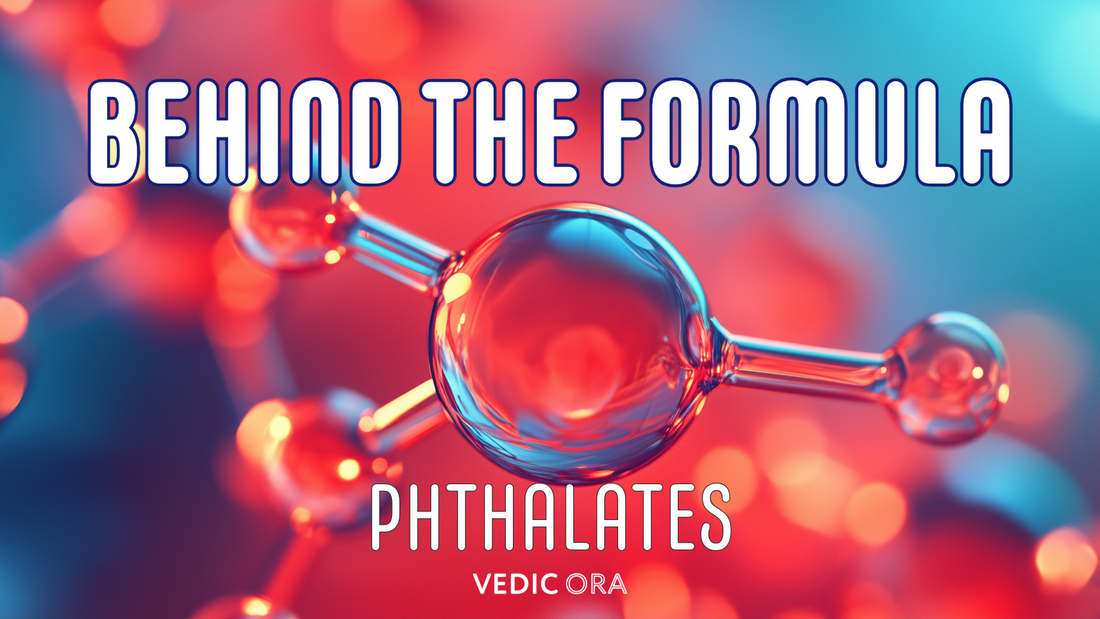
Phthalates - Behind The Formula
Welcome back to "Behind the Formula," our blog series that explores the science and ingredients behind your favorite beauty products. In this fourth installment, we dive into phthalates, a group of ingredients that have generated significant discussion and concern in the beauty industry.
What Are Phthalates?
Phthalates are a group of chemical compounds used to make plastics more flexible and to dissolve other substances. In the cosmetics industry, phthalates are primarily used as solvents and to help products adhere to the skin. Some commonly used phthalates include:
- Diethyl Phthalate (DEP)
- Dibutyl Phthalate (DBP)
- Dimethyl Phthalate (DMP)
Why Do We Use Phthalates in Cosmetics?
1. Stability and Consistency
Phthalates help maintain the stability and consistency of products, ensuring they remain effective over time. They prevent products from becoming too thick or too runny.
2. Flexibility and Durability
In nail polishes, phthalates like DBP increase flexibility and durability, preventing the polish from becoming brittle and cracking.
3. Fragrance Fixatives
Phthalates help fragrances last longer by slowing down the evaporation process. This makes perfumes and scented products more effective and long-lasting.
Common Products That Contain Phthalates
You’ll find phthalates in various personal care and cosmetic items, including:
- Nail Polishes: Increase flexibility and durability.
- Hair Sprays: Improve the texture and hold of the product.
- Fragrances: Extend the longevity of the scent.
- Lotions and Creams: Maintain consistency and enhance absorption.
- Deodorants: Help dissolve other ingredients and improve application.
The Downsides of Phthalates in Cosmetics
While phthalates offer several benefits, they also come with potential drawbacks and concerns:
1. Health Concerns
Research suggests that some phthalates can disrupt the endocrine system, potentially leading to reproductive and developmental issues. These concerns have led to increased scrutiny and regulation of phthalates in many countries.
2. Allergic Reactions
Some people may experience allergic reactions to phthalates, including skin irritation and dermatitis, particularly in those with sensitive skin.
3. Environmental Impact
Phthalates can be harmful to the environment. When they enter water systems, they can affect aquatic life and contribute to pollution. The production of phthalates also involves chemicals and processes that are not environmentally friendly.
Natural Alternatives to Phthalates
Due to concerns about phthalates, many brands are exploring natural alternatives to achieve similar effects. These alternatives come from natural sources and are often gentler and more eco-friendly.
1. Essential Oils
Essential oils can serve as natural fragrance fixatives, helping scents last longer without the need for synthetic chemicals. Common options include sandalwood, frankincense, and myrrh.
2. Beeswax
Beeswax is a natural alternative that can provide flexibility and durability in products like nail polish and hair sprays. It helps improve the texture and application of these products.
3. Plant-Based Plasticisers
Derived from natural sources like castor oil and soy, plant-based plasticizers can provide similar benefits to phthalates without the associated health risks. They help maintain the flexibility and consistency of products.
4. Natural Solvents
Ingredients like ethanol (derived from sugar cane or corn) and vegetable glycerin can act as natural solvents, helping dissolve other ingredients and enhance the application of products.
5. Candelilla Wax
Candelilla wax, derived from the leaves of the candelilla shrub, can be used in place of phthalates in various cosmetic products. It helps improve texture and consistency while being environmentally friendly.
Conclusion
Phthalates have been widely used in the cosmetics industry for their ability to enhance stability, flexibility, and fragrance longevity. However, their potential health risks and environmental impact have led to increased scrutiny and a demand for phthalate-free alternatives. Fortunately, many natural alternatives are available, allowing you to choose products that meet your needs and align with your values.
Stay tuned for the next article in our "Behind the Formula" series, where we will explore another key ingredient in your beauty routine. Whether you’re a skincare enthusiast or just curious about what goes into your favorite products, we’re here to demystify the world of cosmetics, one ingredient at a time.


